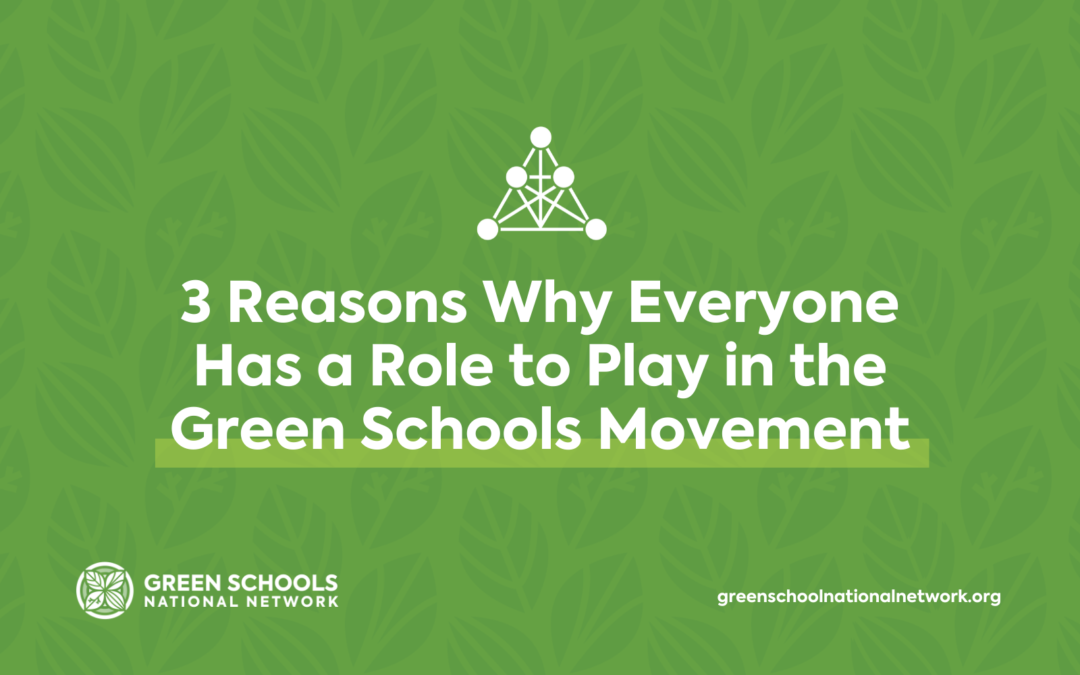Global climate change is accelerating, and humans are to blame. That’s the conclusion of a stark new report released on August 9 by the United Nations Intergovernmental Panel on Climate Change. The report goes on to state that it’s still possible to meet the targets set by the 2015 Paris Climate Agreement, but it’s going to take an all-hands-on-deck approach from all countries around the world.
While sobering, the new report’s findings aren’t surprising to those who are involved in tackling climate-related issues. If anything, they confirm the important work that must be done to ensure our planet is healthy and thriving for future generations. Climate change affects us all – some much more than others. Low-income communities and Black, Indigenous, and people of color are disproportionately impacted by climate change, from living in regions more prone to extreme weather events to experiencing ailments like asthma, heart disease, and other chronic conditions.
Green Schools Show a Path to a Just and Sustainable Future
Solving the climate crisis is a marathon, not a sprint. Effective, lasting solutions start at the local level and actively engage young people in their ideation and implementation. Enter the green schools movement.
The green schools movement’s roots lie in the field of environmental education; however, over time, its focus has broadened to encompass more than teaching students to care for the ecosystems that sustain us. Just as important is caring for the people who call Earth home. Creating a just and sustainable future necessitates that teachers and students acknowledge and address environmental justice and social justice issues, too. Poverty, food insecurity, disease, systemic racism – we cannot expect to solve these challenges if we don’t have the knowledge and skills to co-create the future we want.
Green schools are showing the way to a just and sustainable future by modeling healthy, equitable, and sustainable practices in everything they do, from how they operate on a daily basis to the curriculum they teach. Green schools are able to accomplish many of the things they do because they have support from everyone in the school community – administrators, teachers, school staff, parents, students, and community members.
Everyone can play a role in the green schools movement; no contribution is too big or small. Here are three reasons why, along with some ideas for getting involved now.
Everyone is a Leader and a Learner
Everyone has a voice and a unique perspective they can lend toward the creation of healthy, equitable, and sustainable schools. The following articles describe some of the ways in which parents, teachers and staff, students, and community organizations are contributing to the green schools movement as leaders and learners.
- Family Engagement: How it Looks Different (and is the Same) at a Green High School
- Embracing Gender Diversity at Oak Park Unified School District
- The Three P’s: How High School Students are Reinventing the Triple Bottom Line of Sustainability in Business
- Cultivating Community through a Chef in the Garden Program
Equity Matters
All students, regardless of their backgrounds, zip codes, and social, gender, and racial identities, deserve opportunities to achieve academic success and go to schools that have safe, healthy learning environments. The following articles describe some of the ways in which school leaders, teachers, students, and community organizations are working to center equity in their schools and communities.
- The Time has Come for Culturally Relevant Leadership
- Creating Space for Culturally Responsive Teaching at Common Ground High School
- Justice for All: Art is a Powerful Tool for Advocacy
- Growing Resilience Together: The Badger Rock Collaborative Partnership
Systemic Change Endures
Healthy, equitable, and sustainable schools can only be achieved through whole-school transformation – in this case, adopting a living systems approach that integrates sustainability into all facets of a school’s design, operations, curriculum, and culture. The following articles describe some of the ways in which school leaders and staff, teachers, and community organizations are working to create the conditions for impactful change.
- Growing a New Generation of Environmental Stewards
- P4BL: Phenomena-Based, Place-Based, Project-Based, and Problem-Based Pedagogy to Deepen Learning
- Waste Not, Want Not: Boulder Valley School District’s School Food Project Leads the Way in K-12 Sustainable Food Systems
- It Takes a Village to Transform School Lunches
There’s a place for everyone to participate in the green schools movement. An easy step you can take now is to become a member of Green Schools National Network (GSNN). GSNN members gain access to a community of like-minded peers through our exclusive member center, where you can share ideas, best practices, and lessons learned to advance our movement for a sustainable future

